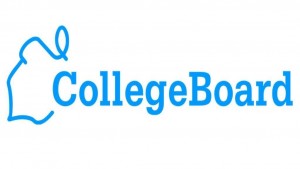This one caught me by surprise.
According to a major analysis of college costs done by the College Board, the net cost of tuition, fees, room and board for the average student at a private college is pretty much the same as it was ten years ago, when adjusted for inflation.
 I have been hearing so many media reports about the rising cost of college and mounting student debt, that I did not expect to see this. Yet, there it is: not only have the actual costs at private colleges leveled off, but the actual cost is far less than the “sticker” price that one gets when looking at tuition, room and board.
I have been hearing so many media reports about the rising cost of college and mounting student debt, that I did not expect to see this. Yet, there it is: not only have the actual costs at private colleges leveled off, but the actual cost is far less than the “sticker” price that one gets when looking at tuition, room and board.
So, you want to get a rough idea of what the average student will actually have to pay for a private college?
Figure it to be about 57% of the published costs for tuition, fees, room and board.
How can this be? We’ve all been inundated with story after story about the rising costs of college in recent years. Is this report completely off base?
As I look at it, it makes sense to me. We have to keep several things in mind. First, college costs did increase well beyond the rate of inflation in the 1980s and 90s. That is real. It seems likely, though, that popular perceptions are about a decade behind reality. We first started worrying about high costs of college in the 1990s and especially in the 2000s. Meanwhile, it appears that the costs have stabilized (for private colleges) in the last decade but popular perception hasn’t kept up.
Second, other than health care, there is no cost that is so complicated and confusing to calculate as that of higher education. You can’t just figure it based on the stated cost of tuition. You have to take those costs, and calculate in grants, tax benefits (ah, our wonderful tax code!), and this mysterious thing called the “discount rate.” But a student usually won’t know what the actual cost of a given college will be until they have applied to a college, submitted a financial aid to the government, and then received the financial aid offer back from the college. (The last part is where the discount rate kicks in). Most people also fail to calculate what they will save in taxes after that point. Actual costs, then, vary from student to student. Confusing, isn’t it?
On top of that, these are all moving targets: tuition, discount rates, tax breaks, inflation, family income, offers by the financial aid office. For instance, ten years ago, you could figure the actual costs of tuition, fees, room and board to be 68% of the “sticker” price, which is significantly different from the average 57% of “sticker” price today. So, yes, sticker prices of tuition have been going up (the price that is quoted most often in reports you see) but actual costs have not.
(The next time you see a report about the rising costs of college, look to see whether the figures are based on “sticker” prices of tuition or actual costs. Chances are, it will only give you the “sticker” price rather than the actual cost).
What a mess. It just isn’t as easy as walking into Best Buy and comparing the costs of different HD TVs, is it?
Third, the media doesn’t always report these things very well, particularly since the system is so confusing. And thanks to the Great Recession we’ve been battling, debt of all kinds is on our minds. Some media handle these issues effectively and some do not. Recently, an area newspaper featured a Malone graduate on its front page, making the point in the opening sentences that this student was $80,000 in debt. Far down in the story, it was mentioned that the average Malone student graduated with $23,400 in debt, which is, quite frankly, a big difference. Most students are in a very different situation than this grad and nearly 20% of Malone students do not have any debt when they graduate. But the headlines and structure of the story leave the reader with a perception that college costs are much worse than what they really are.
And let’s face it, a story about a student who leaves a private college with a debt of, say, $2500, probably is not going to attract as many readers.
At any rate, the economics of higher education is certainly a complicated and confusing system. But this latest report from the College Board gives one reason to hope that things are actually better than what they seem.
So, if you know of anybody who is considering a private college, but is getting scared by the sticker price, encourage them to dig deeper than just the sticker price when they are figuring costs.
